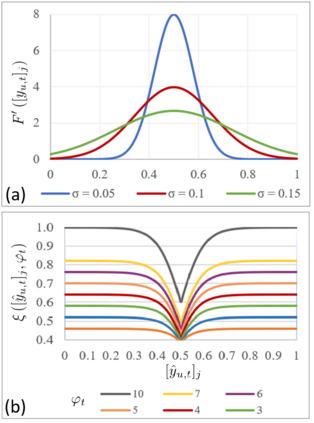Multi-label image classification aims to predict all possible labels in an image. It is usually formulated as a partial-label learning problem, since it could be expensive in practice to annotate all the labels in every training image. Existing works on partial-label learning focus on the case where each training image is labeled with only a subset of its positive/negative labels. To effectively address partial-label classification, this paper proposes an end-to-end Generic Game-theoretic Network (G2NetPL) for partial-label learning, which can be applied to most partial-label settings, including a very challenging, but annotation-efficient case where only a subset of the training images are labeled, each with only one positive label, while the rest of the training images remain unlabeled. In G2NetPL, each unobserved label is associated with a soft pseudo label, which, together with the network, formulates a two-player non-zero-sum non-cooperative game. The objective of the network is to minimize the loss function with given pseudo labels, while the pseudo labels will seek convergence to 1 (positive) or 0 (negative) with a penalty of deviating from the predicted labels determined by the network. In addition, we introduce a confidence-aware scheduler into the loss of the network to adaptively perform easy-to-hard learning for different labels. Extensive experiments demonstrate that our proposed G2NetPL outperforms many state-of-the-art multi-label classification methods under various partial-label settings on three different datasets.
翻译:多标签图像分类旨在预测图像中所有可能的标签。 它通常是一个部分标签学习问题, 因为在实践中, 批注每个培训图像中的所有标签可能花费很多, 实际中, 批注每个培训图像中的所有标签可能花费很多。 部分标签学习的现有工作侧重于每个培训图像贴上标签时只贴上正/ 负标签子集的情况。 为了有效解决部分标签分类, 本文建议为部分标签学习建立一个端到端通用通用游戏理论网络( G2NetPL) 。 部分标签学习可以适用于大多数部分标签设置, 包括一个非常具有挑战性但说明效率高的案例中, 仅给每个培训图像贴上一个正面标签, 而其余的培训图像则不贴上标签。 在 G2NetPL, 每个未观察到的标签都与软假标签挂钩相关, 与网络一起, 设计一个两部玩家的非零和不合作的游戏。 网络的目标是将损失功能降到最低, 包括一个非常具有挑战性的, 但注释的多部分标签- 将会寻求将一个多层次的多位化的多位化的图像显示为 G 的网络的连接, 。 。 确定我们从一个容易的标签到一个标签的标签的递增缩缩到一个标签。








